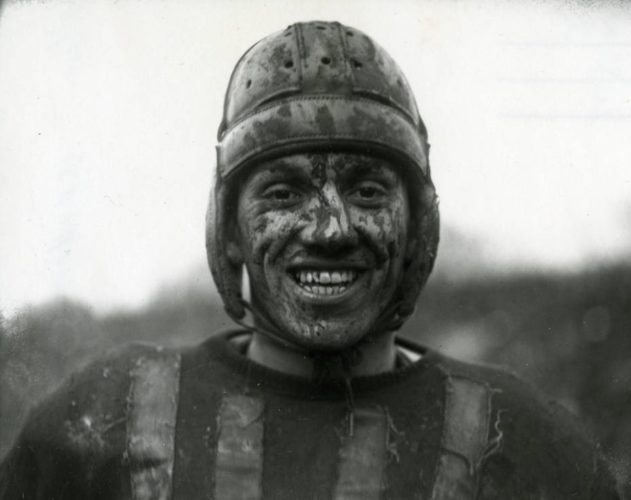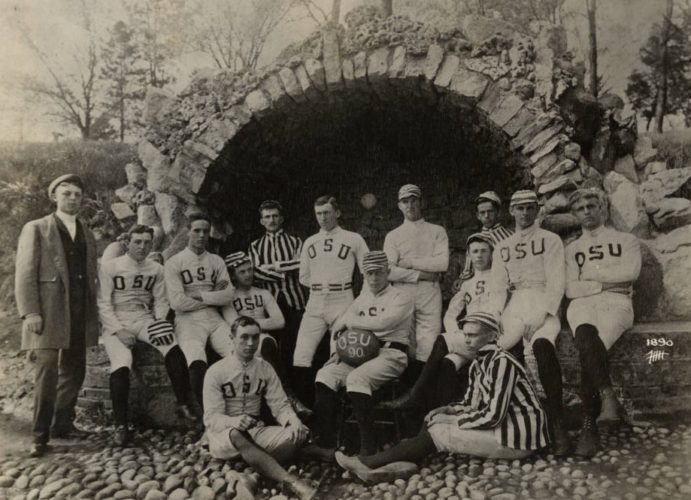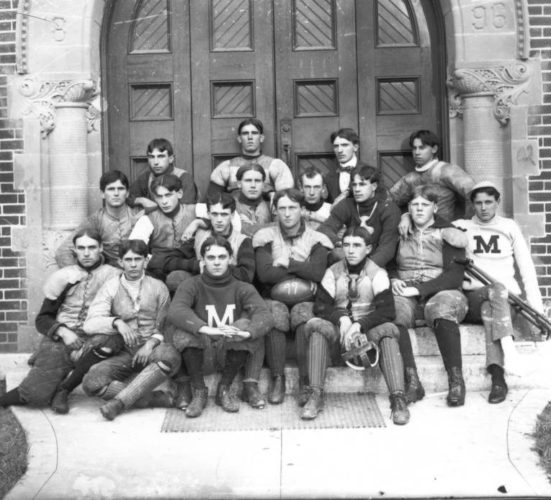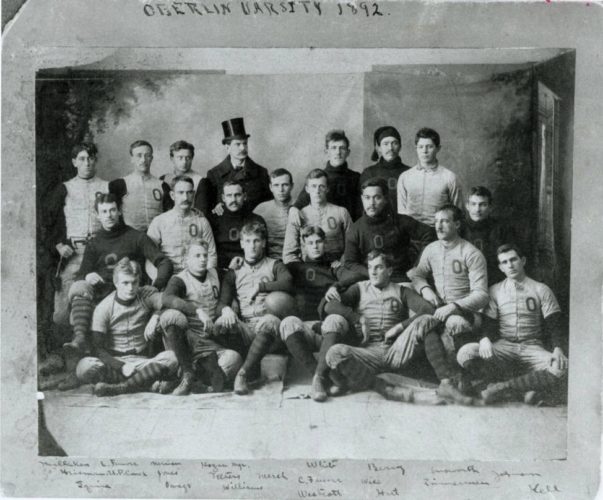Football, American Style

College football season is here once again! This week we’re taking a look back at the early days of college football in the United States, including a coaching legend with Ohio ties.

North American football has its roots in several types of “football” games played at schools in Great Britain in the 1800s–over time, these games made their way to U.S. colleges via Canada. At first, each school played its own version of football; most were mob-style games featuring large numbers of players trying to move the ball down the field any way they could. Injuries were common; in 1860 both Yale and Harvard (where the “Bloody Monday” football game between freshmen and sophomores had been a tradition since 1827) banned the sport.
The first American intercollegiate football game took place on November 6, 1869, between Rutgers and Princeton. The game was played at Rutgers using their rules, which were based on the rules of the (British) Football Association. This first game looked very different from modern football. Teams of twenty-five players tried to kick a round ball through the opponent’s goal; throwing or carrying the ball was prohibited. The first team to reach six goals won.
During the early 1870s several other colleges began to field football teams, and rules became more standardized to make intercollegiate play easier. Rugby-style rules, introduced to the U.S. in a game between Harvard and McGill University, were adopted by Harvard, Yale, Columbia, and Princeton in 1876. In the early 1880s, a Yale player named Walter Camp introduced the line of scrimmage, the snap, and down-and-distance rules, changing rugby-style play into a unique new game and earning Camp the title “Father of American Football.”

College football games increased in popularity across the country in the late 1800s and early 1900s, but also became increasingly violent. Between 1890 and 1905, more than 300 college players died from football-related injuries, causing several schools to suspend their programs. President Theodore Roosevelt, who was a football fan, argued for better safely measures. In 1906, the Intercollegiate Athletic Association of the United States (now known as the National College Athletic Association) was founded and implemented rule changes to make the game safer.

The late nineteenth and early twentieth centuries also saw the rise of star players, including Jim Thorpe and Red Grange, as well as star coaches, including Pop Warner, Knute Rockne, and Cleveland native John Heisman. Heisman played football at Brown and the University of Pennsylvania before beginning his coaching career at Oberlin in 1892, where he led the team to a 7-0 record. He went on to coach at schools including Auburn, Clemson, and Georgia Tech, where he stayed for seventeen years. Heisman retired from coaching in 1927 and in 1930 became the first athletic director at New York City’s Downtown Athletic Club. Two months after Heisman’s death in 1936, the Downtown Athletic Club trophy was renamed the Heisman Memorial Trophy, which recognizes the most outstanding college football player in the country each year.
Thank you to Stephanie Michaels, Research and Catalog Services Librarian at theState Library of Ohio, for this week’s post!



Leave a Reply
You must be logged in to post a comment.